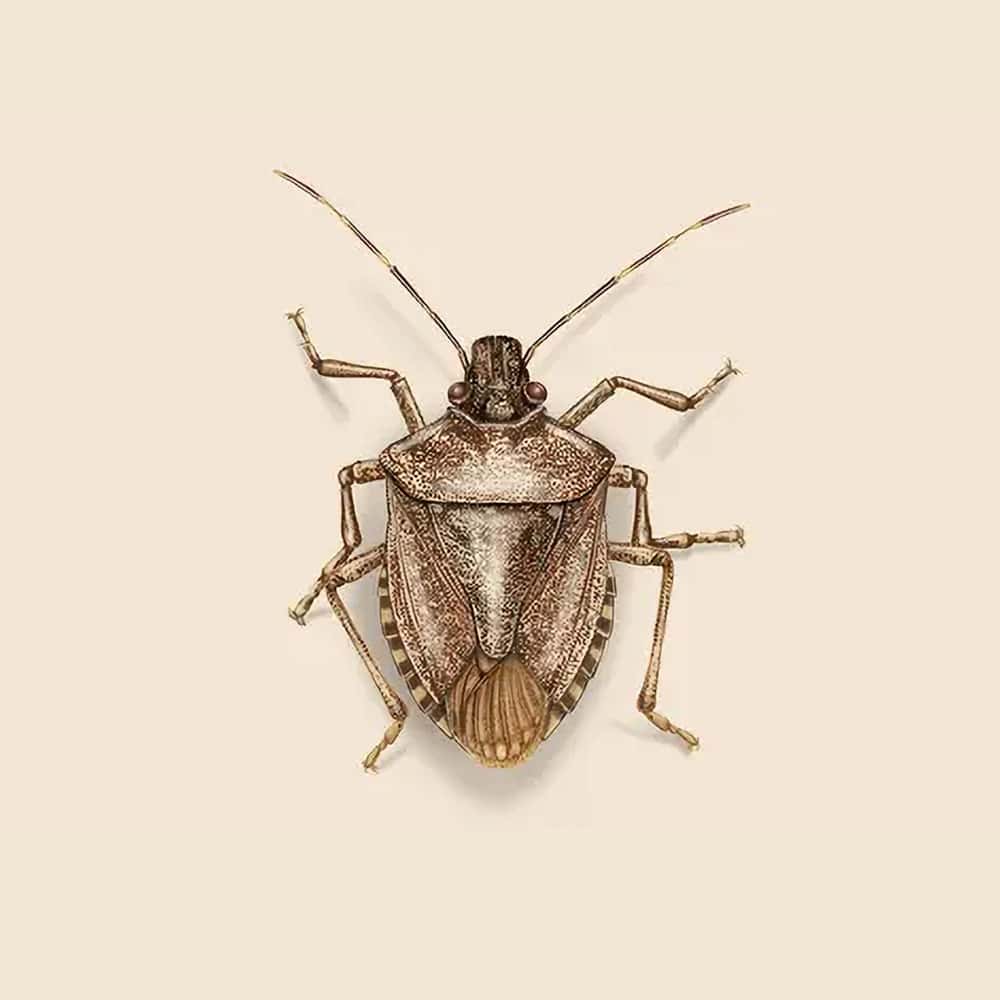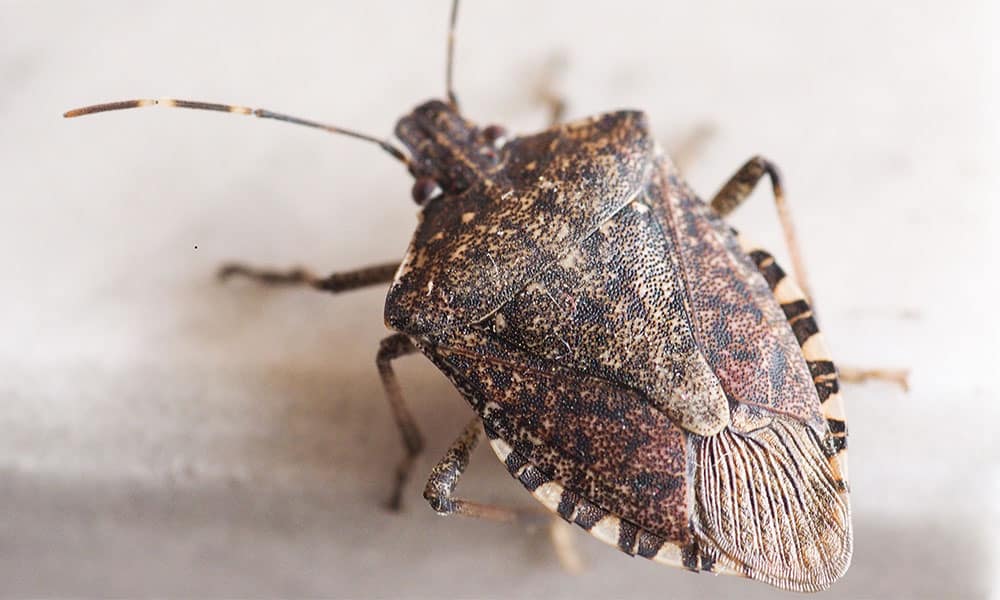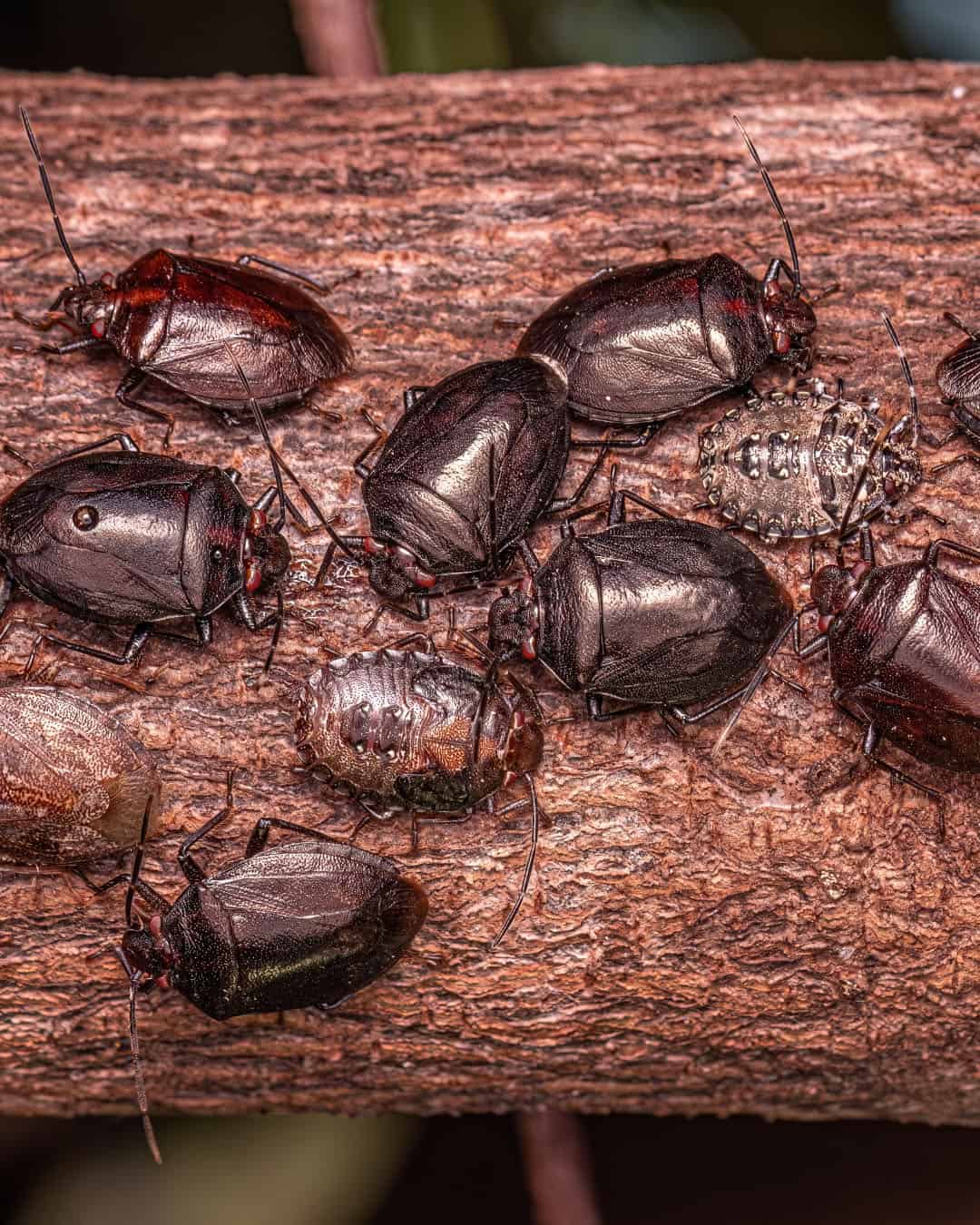Stink Bug Facts & Information
Stink bugs, known for their distinctive odor and propensity to invade homes in large numbers, are a common nuisance in many parts of the country. While they primarily live outdoors, they often seek shelter indoors as the weather cools, causing distress for homeowners.

Family Pentatomidae
What You Need To Know About Stink Bugs
What do stink bugs look like?
Stink bugs, particularly the brown marmorated stink bug (Halyomorpha halys), are shield-shaped insects that typically measure about 1/2 to 3/4 inch in length. They are usually brown or grayish in color, with a mottled pattern on their backs. Their distinguishing feature is the shield-like shape of their body, which is wider at the top and tapers towards the bottom. They also have antennae with light and dark bands.
What do stink bugs eat?
Stink bugs are herbivores and feed on a wide variety of plants. They use their piercing-sucking mouthparts to extract sap from fruits, vegetables, and other plants. This feeding can cause significant damage to crops, leading to blemishes on fruit, wilting, and overall reduced crop yield.
What sort of habitat do stink bugs live in?
Stink bugs are commonly found in agricultural fields, gardens, orchards, and forests. They are also notorious for seeking shelter indoors during the cooler months, entering homes and other structures in search of warmth. They are particularly prevalent in temperate regions, where they can find an abundance of food and suitable places to overwinter.
How do stink bugs commonly behave?
Stink bugs are known for their defensive behavior when threatened or crushed—they release a foul-smelling odor from glands located on their abdomen. This odor is a deterrent to predators and helps protect them. They are slow-moving insects and often congregate in large numbers, especially when they are seeking warmth in the fall. Inside homes, they can be a nuisance, though they do not bite or cause structural damage.
Did you know this about stink bugs?
The brown marmorated stink bug is an invasive species in many parts of the world, including the United States, where it has become a significant agricultural pest. Interestingly, the odor they release when disturbed is chemically complex, containing compounds that can be detected by humans and other animals at very low concentrations. Despite their unappealing smell, stink bugs have natural predators, including birds, spiders, and certain types of parasitic wasps, which help keep their populations in check in their native environments.
Understanding Stink Bug Infestations
Understanding stink bug infestations is essential for effective management. Stink bugs, particularly the brown marmorated stink bug, are shield-shaped insects that can be identified by their mottled brown appearance and distinctive triangular plate on their backs. These pests are most active during the warmer months and tend to seek shelter indoors as temperatures drop in the fall. Stink bugs feed on a wide range of plants, fruits, and vegetables, piercing the surface to suck out nutrients, which can lead to unsightly damage and reduced yields.

How Hearts Handles Stink Bug Treatment
Hearts Pest Management employs an integrated pest management approach to handle Stink Bug infestations.
Stink Bug Inspection
Stink Bug Treatment
Stink Bug Prevention
Educational Resources

Think You Might Have a Stink Bug Infestation?
At Hearts Pest Control, we understand the challenges associated with Stink Bug infestations and are here to provide professional solutions tailored to your needs. Flourishing in warm and humid climates, they are prevalent in many regions, including San Diego County, Orange County, and Los Angeles County.